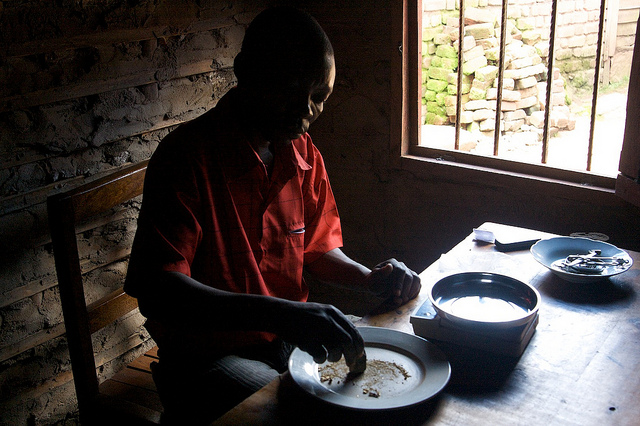
The conflict-gold rush is thriving in eastern Congo. Recent U.S. legislation and supply-chain pressure from tech companies has made it difficult for armed groups in the region to sell the 3-T minerals—tin, tantalum, and tungsten—and as a result, rebels and army commanders have increasingly turned to gold. In a report released today, the Enough Project looks at the illegal conflict-gold trade in eastern Congo that is fueling one of the most violent conflicts in the world. The paper traces the gold trade industry from mines in eastern Congo into its final form: jewelry or gold bars sold to consumers worldwide.
As gold prices rise, the gold trade has the potential to bring economic growth and revenue to communities in the region. This reality, however, is stunted by armed groups and/or army commanders who control a majority of mines. They force miners—some of who are as young as eight years old—to work, take cuts from the miners, and tax traders along supply routes, making it the most lucrative conflict mineral for armed groups in eastern Congo.
Guided by Gen. Bosco Ntaganda, the leaders of the M23 rebellion ran an extensive conflict gold smuggling ring in 2011 that was disrupted in mid-2012 following Ntaganda’s defection from Congo’s army. Other warlord groups, including the Rwandan Hutu Democratic Forces for the Liberation of Rwanda, Mayi Mayi armed militias, and Congolese army generals also mine and smuggle gold. M23 is now attempting to retake control of the trade, as it builds alliances with the warlords in control of gold mining areas. With majority control, armed groups gain profit through taxation, protection, commercial control, or coercive control, often making deals with local and regional smugglers. Additionally, they fund their operations from profits and trade gold for weapons, which fuels continued violence in the region.
While progress has been made to curb armed group profit in other mineral trade, the report states that few inroads have been made in the gold sector: The conflict-gold trade “has increased over the same period rather than decreased: Fighting in and around gold mines continues; mines are at full production.” The corruption, however, does not end in Congo and the surrounding region. More than $600 million worth of gold is estimated to leave Congo every year, and flows from the hands of smugglers in the region to dealers in Dubai, the Middle East, and India. This gold is then made into jewelry, the largest end-use of gold worldwide making up 50 percent of the world gold demand.
In conclusion, the report emphasizes that cutting support for warlords in eastern Congo and promoting a responsible gold supply chain is a crucial step to help achieve peace in the region:
Whether industrial mining helps or harms eastern Congo will depend on how companies interact with communities and help artisanal miners, meet key standards, exclude warlords, and operate transparently.
Read the full Enough Project report: “From Child Miner to Jewelry Store: The Six Steps of Congo's Conflict Gold”

Photo: A gold trader in eastern Congo (Enough / Sasha Lezhnev)

